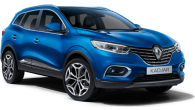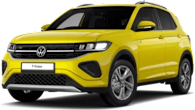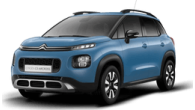There was a time, and it wasn't so long ago, when getting excited about choosing between two small SUVs would have required a defibrillator, a shot of adrenaline, or both. They were value-driven offerings, driving dynamics be damned, and there just wasn't much to get excited about.
These days, though, small SUVs are taken much more seriously, both by the automotive companies and by the car-buying public, and far from being the forgotten children, they are often a smarter, cheaper choice than their bigger siblings.
Take the two we have here, for example. Both the Hyundai Kona and Toyota Corolla Cross serve up plenty of hybrid efficiency, a small splash of driving excitement, and enough cabin and cargo space to satisfy most smaller Aussie families.
Still, in the battle of the hybrid small SUVs, this one feels a bit like Rocky versus Clubber Lang, if you’ll forgive the old-man movie reference.
In the red corner, you have the Toyota Corolla Cross Hybrid, an electrified offering from the company that basically put hybrids on the map. Remember, Toyota was banging out hybrids at a time when you’d have rather caught the flu than be caught dead in a Prius. They’ll take off eventually, they promised. And boy were they right.
And in the white corner, you’ve got the Hyundai Kona Hybrid, a small and mega-efficient SUV from a brand that has been pretty open about coming for Toyota’s electrified-car crown here in Australia.
So, two small SUVs, both hybrids, both super efficient, and both here to do battle to see who comes out on top.
Hyundai Kona 2025:
| Engine Type | Inline 4, 2.0L |
|---|---|
| Fuel Type | Unleaded Petrol |
| Fuel Efficiency | 6.6L/100km (combined) |
| Seating | 5 |
| Price From | $32,500 |
| Safety Rating |
|
Price and features – Do they represent good value for the price? What features do they come with?
So, let’s meet our contenders. First we have the Toyota Corolla Cross GXL. It’s the middle child in the Corolla Cross family, and it’s yours for $40,230 before on-road costs (or $44,446 drive-away, as of right now in NSW). It’s 2WD, has a 2.0-litre petrol-hybrid powertrain, and a continuously variable automatic transmission (CVT).
And we have the Hyundai Kona Hybrid, it’s the brand's entry-level Kona, and it’s $36,500 before on-road costs (or about $41,000 drive-away in NSW). This one pairs a 1.6-litre petrol-hybrid powertrain with a six-speed dual-clutch automatic transmission (DCT).
Now, about that price gap. There is a cheaper Corolla Cross, the GX, which is yours for around $40,500 on the road, and there's an N Line version of the base Kona hybrid for an extra $4000, but that adds sportier design flourishes and some performance features. In the end, these are the two cars we have to compare.
So what do you get for that investment?
In Toyota town, it means 17-inch wheels and all-LED lighting outside, while in the cabin, there are leather-accented seats (that do without any heating), dual-zone climate control, manual seat adjustment, a leather-accented steering wheel and shifter, and keyless entry with push-button start.
Tech is covered by a 10.5-inch central screen with wireless Apple CarPlay and Android Auto, a six-speaker stereo and a 7.0-inch colour screen for the driver. No wireless charging seems an oversight, though.
Now, this might be the cheapest Hyundai Kona Hybrid, but it doesn’t feel like it, at least not based on its spec sheet.
It gets bigger 18-inch wheels and LED headlights and daytime running lights (DRL). Unlike the Toyota, it gets all-fabric seats, but it does add a wireless charging pad to go with its Apple CarPlay and Android Auto.
Like the Toyota, it gets dual-zone climate control and keyless entry and push-button start, while tech this time comes courtesy of a 12.3-inch central touchscreen paired with a six-speaker stereo, and there’s a 4.2-inch driver display screen.
With all of that in mind, you’d have to say the Hyundai shades the Toyota in a straight spec battle, but only ever so slightly. The Toyota will give you a little leather, but the Hyundai pretty much matches, or exceeds, the Corolla Cross elsewhere, and it does it for less money.
| Toyota Corolla Cross Hybrid | Hyundai Kona Hybrid | |
| Price (MSRP) | $40,230 | $36,500 |
| Mulitmedia screen | 10.5-inch | 12.3-inch |
| LED headlights | Yes | Yes |
| Android Auto / Apple CarPlay | Yes | Yes |
| Heated front seats | No | No |
| Upholstry | Leather-trimmed | Fabric |
| Audio | Six-speaker | Six-speaker |
| Nav | Yes | No |
| Digital radio | Yes | Yes |
| A/C | Dual-zone | Dual-zone |
| Keyless entry | Yes | Yes |
| Leather-trimmed steering wheel | Yes | Yes |
| Auto rain-sensing wipers | No | No |
| Alloy wheels | 17-inch | 18-inch |
| Privacy glass | Yes | No |
| Wireless charging | No | Yes |
| Rating | 7 | 8 |
Design – Is there anything interesting about their designs?
This is a tough one, because it really doesn’t matter what I say or think, you’ll have one you prefer the look of, and that’s simply that.
Let’s start with the Kona. There is a more bonkers N Line version, but this is the more sensible choice, and I’d say it’s the more modern feeling of the two competitors we have here, what with its round edges, sharp body creases and its futuristic but elegant light treatment front and rear.
The Corolla Cross is a little more mature in its design, with its fairly muted styling, but I still think it looks sharp, I love the teethy textured grille, which is in stark contrast to the Hyundai Kona, and the kind of old-school design of the admittedly smaller 17-inch wheels.

Now the cabins of these two small SUVs do feel a little like an unfair match-up, given the Toyota - which is frankly a nicer place to spend time - is a mid-spec offering, and so more expensive than the entry-level Hyundai.
If you were to take the extra $5000 needed for the Corolla Cross and drop it on the Kona, you'd end up with the N Line pack, which improves the cabin materials considerably.
Anyway, the Corolla Cross is a nice, easy and pretty premium-feeling place to spend time, with a big central screen for multimedia, another that handles driving info, and some physical buttons to control things like the air-con controls.
Still, there are some quirks. For one, there's no wireless charging, which is present in the cheaper Hyundai. But more importantly, the way the cabin kind of pokes out at you makes the Corolla Cross feel smaller than it is, and a little claustrophobic.
The cabin of the Kona takes a more modern approach, which begins with the twin-screen setup, which looks clean and works well. But there are also a heap of physical buttons, meaning almost anything you need is a moment away, rather than having to dig through screen menus.
There are reminders you're in an entry-level car, though. It all looks nice, but start touching surfaces and you'll find lots of hard plastics.
| Toyota Corolla Cross | Hyundai Kona Hybrid | |
| Rating | 8 | 7 |
Practicality – How practical is their space and tech inside?
Both of these SUVs are the same width, but the Corolla Cross is slightly longer, while the Kona rides on a slightly bigger wheelbase. But of course those are just numbers, the big question is, what sort of impact do they have on cargo and passenger space inside.
When it comes to boot space, the Toyota will serve up 425 litres with the rear seats in place, while the Hyundai is good for 407 litres. Where there is some daylight between the models is with towing. The Toyota is limited to 750kg braked, while the Hyundai claims a maximum 1300kg.
The big question is how do those dimensions translate to interior space?
Remember how I said the front seats of the Corolla Cross felt lightly claustrophobic? That feeling extends to the backseat, too. It's not that it's too tight - at 175cm I still had enough head room and knee room - it's just that it feels tighter and more closed in than in the Kona.
Elsewhere, there are rear vents (but no temp controls) and twin USB ports. There's no pull-down divider, instead cupholders are moulded into each of the rear doors.
The Kona, on the other hand, feels bigger, and more airy, than the Toyota, and I honestly think there a lots of smaller Aussie families that could make do with the space on offer here.
Sitting behind my own driving position, I found I had lots of leg and headroom, and the space just feels lighter and brighter than in the Corolla Cross.
Like the Toyota, you've got air vents and twin USB ports, but unlike the Corolla Cross, to use the cupholders you'll have to deploy the central armrest.
Dimensions | Toyota Corolla Cross | Hyundai Kona Hybrid |
Length (mm) | 4460mm | 4350mm |
Width (mm) | 1825mm | 1825mm |
Height (mm) | 1620mm | 1585mm |
Wheelbase (mm) | 2640mm | 2660mm |
Boot volume (L) | 425L | 407L |
USB front | 1 x C | 2 x C |
USB rear | 2 x C | 2 x C |
Cupholders front | 2 | 2 |
Cupholders rear | 2 | 2 |
Bottleholders front | door bins | Door bins |
Adjustable rear A/C vents | Yes | Yes |
12-volt socket | 1 x front | 1 x front |
Rear map pockets | Yes | Yes |
Spare tyre | Space-saver | Space-saver |
Glove box | medium | medium |
Front centre box/armrest | Yes | Yes |
Rating | 7 | 8 |
Under the bonnet – What are the key stats for their engines and transmissions?
Both these hybrid SUVs achieve much the same goal, they just go about it in slightly different ways.
In the Toyota, you get a 2.0-litre petrol engine that produces 112KW and 190Nm, but the electric assistance lifts those outputs. That power is fed through an occasionally annoying CVT automatic and sent to the front tyres.
In the Hyundai, a 1.6-litre petrol engine makes just 77kW and and 144Nm, but it too gets electric help from its front-mounted motor, lifting those figures to a total 104kW and 265Nm. In this case, the grunt is channeled through a six-speed DCT automatic and released into the world through the front tyres.
Toyota claims a 7.6-second sprint to 100km/h. Hyundai doesn’t actually claim a zero to 100km/h time, but honestly, they both feel pretty similar.
Toyota Corolla Cross | Hyundai Kona Hybrid | |
Engine | 2.0L 4cyl atmo petrol | 1.6L 3cyl atmo petrol |
Power (kW) | 112kW @ 6600rpm | 77kW @ 5700rpm |
Torque (Nm) | 190Nm @ 4400rpm | 144Nm @ 4000rpm |
Power combined (kW) | 146kW | 104kW |
Torque combined (Nm) | TBA | 265Nm |
Transmission | CVT Automatic | Six-speed DCT |
Drive | FWD | FWD |
Rating | 7 | 7 |
Efficiency – What is their fuel consumption? What are their driving ranges?
This is where it gets interesting. And for the record, we’ve left both these vehicles in their normal 'Eco' drive mode - we’re trying to keep this as balanced as possible.
So, the claims. Toyota says to expect 4.2L/100km on the combined cycle. Hyundai goes one better, suggesting 3.9L is possible on the same cycle.
Real world, though, we’ve found the Corolla Cross reporting 4.9L/100km, and the Kona Hybrid delivering 5.0L/100km. Not much in that, then.
And to be fair to both models, our test program involved some fairly enthusiastic and twisty driving. We have not been trying to eek out the best fuel use, so to get five litres or less I think is pretty good.
The Corolla Cross has a 36-litre fuel tank, while the Kona gets a 38-litre tank, and both accept the cheapest 91 RON fuel. So with that in mind, and using a realistic 5.0L/100km as the guide, you should get around 720kms from a tank in the Toyota, and around 760kms in the Hyundai.
Fun fact, using today’s prices, it will cost you less than $70 to completely fill either of these two SUVs, and that will get you from Sydney to pretty close to the Queensland border. See why hybrids are so popular?
L/100km | Toyota Corolla Cross | Hyundai Kona Hybrid |
Official combined cycle | 4.2 | 3.9 |
On test (dash) | 4.9 | 5.0 |
CO2 (Combined cycle - g/km) | 96 | 89 |
Fuel tank (L) | 36 | 38 |
Fuel grade | RON 91 | RON 91 |
Range - Theoretical (Combined cycle - km) | 857 | 974 |
Range - Real world (On test - km) | 720 | 760 |
Hybrid battery | 4.08Ahr | 1.32kWh |
Rating | 8 | 8 |
Driving – What are they like to drive?
Prepare to split hairs here. The reality is both the Hyundai Kona and Toyota Corolla Cross are solid on-road performers, without much to split them.
In terms of easy-breezy city motoring, the Corolla Cross does it all really well. But I still think Toyota's hybrid tech is lacking in a little refinement, not helped by a CVT automatic that likes to drone when you flatten your foot.
But if those are the bad, there is still a lot of good in the little Toyota. The ride is great, gliding over all but the worst imperfections. The steering is super light, but it also feels natural and direct, without feeling darty.

The other point I'd make is that the power outputs, which don't sound stratospheric, are actually more than enough to get the Corolla up and moving. We had it on suburban roads, freeways and even some twisty stuff, and it faced it all with ease.
So, easy to drive, and actually quite fun in places, and ridiculously frugal to boot.
The Kona, too, shines in its natural urban environment. I much prefer its more natural-feeling transmission, and it feels more refined in the way the petrol engine and electric motor talks to each other, too.

In typical Hyundai fashion, the ride is really well sorted, and like the Toyota, it feels plenty sprightly for a vehicle in this segment, too.
But there is one oddity that gives the Toyota a slight win in this section. It is the steering, which has a heft that is missing from the super-light action in the Toyota, but it also feels a bit dead and artificial, and like the weight has simply been dialled up to mimic sportiness, but which ends up just feeling a bit annoying.
Advantage Toyota in this one.
Toyota Corolla Cross | Hyundai Kona Hybrid | |
0-100km/h (sec) | 7.6 | 7.5 (est) |
Suspension | strut / torsion beam | strut / multi link |
Steering | Electric / Rack & pinion | Electric / Rack & pinion |
Wheels | 17-inch alloy | 18-inch alloy |
Tyres | TBA | 215/55 |
Spare | Space-saver | Space saver |
Brakes | vented disc / disc | vented disc / disc |
Kerb weight (kg) | 1475 | 1525 |
Rating | 8.0 | 7.0 |
Warranty & Safety Rating
Safety – What safety equipment is fitted? What are their safety ratings?
The Hyundai Kona range scored a four-star ANCAP safety rating when it was tested back in 2023, while the Toyota Corolla Cross is a five-star ANCAP-rated car from testing done in 2022.
So the big question is, how to they put that tech to use?

Annoyingly, to be honest, but more so in the Hyundai than in the Toyota. Both are equipped with a long list of active safety features, but it’s the Hyundai that annoys slightly more with its chimes and bonging. Happily, they’re fairly easy to turn off.
That wasn’t my experience with the Toyota. They feel tuned for Australian conditions, to the point that you can easily forget they’re there. That said, the reversing camera isn’t the best, with an unclear image, even in perfect conditions.
Toyota Corolla Cross | Hyundai Kona Hybrid | |
AEB | ✓ | ✓ |
Adaptive cruise control | ✓ | ✓ |
Lane departure warning | ✓ | ✓ |
Lane keeping assist | ✓ | ✓ |
Lane departure prevention | ✓ | ✓ |
Lane change assist | ✓ | ⛌ |
Blind-spot monitoring | ✓ | ✓ |
Traffic sign recognition | ✓ | ✓ |
Pedestrian and cyclist detection | ✓ | ✓ |
Rear cross-traffic alert | ✓ | ✓ |
Reversing camera | ✓ | ✓ |
Parking sensors | ✓ | ✓ |
Tyre pressure monitoring | ⛌ | ✓ |
Driver monitoring | ⛌ | ✓ |
ANCAP | Five stars | Four stars |
Front airbags | ✓ | ✓ |
Front side airbags | ✓ | ✓ |
Curtain airbags | ✓ | ✓ |
Child seat top tethers | Three | Three |
ISOFIX anchors | Two | Two |
Rating | 8 | 7 |
Ownership – What warranty is offered? What are their service intervals? What are their running costs?
The Hyundai Kona is covered by a five-year, unlimited-kilometre warranty, with servicing required every 12 months or 15,000km. It gets capped-price servicing, and the first five years will cost you a total $2575, or an average $515 per service.
The Toyota Corolla Cross gets the same warranty, and the same service intervals, but it drops the price per service to $255, or a total $1275 for the first five years of ownership.
Toyota Corolla Cross Hybrid | Hyundai Kona Hybrid | |
Warranty | Five-year/unlimited | Five-year/unlimited km |
Service interval | 12 months / 15,000km | 12 months / 15,000km |
Roadside Assist | Five years | Five years |
Fixed price servicing | Yes | Yes |
Annual average | $255 | $515 |
Rating | 7 | 6 |
Verdict
There’s not too much between these two super-solid offerings in the small hybrid SUV space. The Kona offers more room inside, but I think the Toyota drives a little bit better. The latter happens to be important to me, so it gets the nod here.
Rating | Toyota Corolla Cross Hybrid | Hyundai Kona Hybrid |
7.5 | 7.2 |































































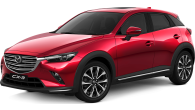
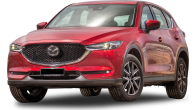





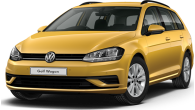

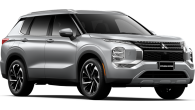









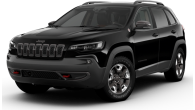
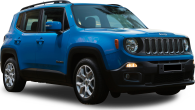













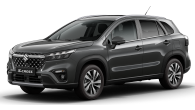
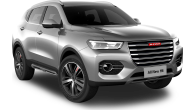

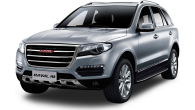



 copy.png)

